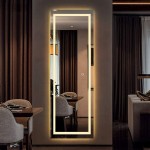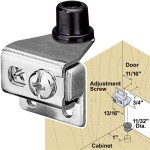Are Vehicle Mirrors Concave or Convex: Understanding the Science Behind Automotive Reflections
Automotive mirrors play a crucial role in driver safety, providing essential visual information about the surrounding environment. Understanding the type of mirror used and its optical properties is vital for safe vehicle operation. This article explores the science behind automotive mirrors, specifically addressing whether they are concave or convex.
Key Differences Between Concave and Convex Mirrors
Concave mirrors curve inwards, like the inside of a spoon. They can produce both real and virtual images depending on the object's distance from the mirror. Convex mirrors, on the other hand, curve outwards, like the back of a spoon. They always produce virtual, upright, and diminished images.
Why Convex Mirrors Are Preferred for Side View Mirrors
Side view mirrors on vehicles almost universally employ convex mirrors. This choice is driven by several crucial safety factors:
Wider Field of View
The outward curve of a convex mirror allows it to reflect light from a broader angle than a flat or concave mirror. This provides drivers with a significantly wider field of view, reducing blind spots and enhancing awareness of surrounding vehicles and obstacles.
Diminished Image Size
While the diminished image size might seem like a drawback, it's actually an advantage in side view mirrors. By shrinking the reflected image, a convex mirror can display a larger portion of the surrounding area within the mirror's frame. This allows drivers to see more of the traffic scene at a glance.
Virtual and Upright Image
The virtual and upright image produced by a convex mirror accurately represents the orientation of objects in the reflected area. This provides a more intuitive and understandable view of the surroundings, enabling drivers to quickly assess the position and movement of other vehicles.
Understanding the "Objects in Mirror Are Closer Than They Appear" Warning
Convex mirrors exhibit a characteristic distortion: objects appear smaller and farther away than they actually are. This is why side view mirrors often carry the warning "Objects in mirror are closer than they appear." This crucial warning reminds drivers to account for the image distortion and judge distances carefully when changing lanes or maneuvering.
The Role of Flat and Concave Mirrors in Vehicles
While convex mirrors dominate the side view application, flat and concave mirrors also play specific roles in vehicle design:
Rearview Mirrors (Flat or Concave)
Rearview mirrors, typically located inside the vehicle, are often flat mirrors. Flat mirrors provide a true-to-size, undistorted reflection of the area behind the vehicle. Some vehicles offer a day/night setting for the rearview mirror, which utilizes a prismatic wedge to slightly tilt the reflective surface. This reduces glare from headlights of trailing vehicles at night. Occasionally, vehicles may incorporate a slight concave curvature into a portion of the rearview mirror. This small concave section can offer a magnified view of the following traffic, useful for monitoring vehicles directly behind.
Blind Spot Mirrors (Convex)
Some vehicles supplement the standard side view mirrors with small, auxiliary convex mirrors, often called blind spot mirrors. These mirrors are strategically positioned to provide a view of the vehicle's blind spots, further enhancing driver awareness and safety.
Headlights (Concave)
While not a mirror in the traditional sense, the reflective surface within a vehicle's headlights is concave. This concave reflector focuses the light emitted by the bulb into a directed beam, maximizing visibility at night.
The Physics of Reflection in Automotive Mirrors
The principles governing reflection in automotive mirrors are rooted in the laws of optics. The angle of incidence, the angle at which light strikes the mirror's surface, equals the angle of reflection, the angle at which light bounces off the surface. This fundamental law, combined with the curved shape of the mirror, determines the size, orientation, and field of view of the reflected image.
The Evolution of Automotive Mirror Technology
Automotive mirror technology has continuously evolved to improve driver safety and visibility. Innovations such as heated mirrors to combat fogging, auto-dimming mirrors to reduce glare, integrated turn signals, and blind spot monitoring systems demonstrate the ongoing advancements in this crucial aspect of vehicle design.
The Importance of Proper Mirror Adjustment
Regardless of the type of mirror, proper adjustment is essential for maximizing their effectiveness. Drivers should regularly adjust their mirrors to ensure optimal visibility and minimize blind spots. This process involves positioning the mirrors to provide an overlapping view of the surrounding areas, reducing the reliance on head checks and enhancing overall situational awareness.

Convex And Concave Mirrors In Cars

Convex Mirrors Use Car

Concave Vs Convex Mirrors In Cars

Types Of Mirror For Vehicles Concave Vs Convex Sunway Autoparts
In Trucks Cars Buses Side View Mirrors Are Convex But Center Rear Mirror Is Or Plane Quora

Types Of Mirror For Vehicles Concave Vs Convex Sunway Autoparts
Why Is A Convex Mirror Preferred For Use As Driving Over Plane Quora

Side View Mirror Wikipedia

The Reason Why Objects In A Car S Side View Mirror Are Closer Than They Appear Mental Floss

What Is A Convex Mirror And Where Do You Use It For Jeka








